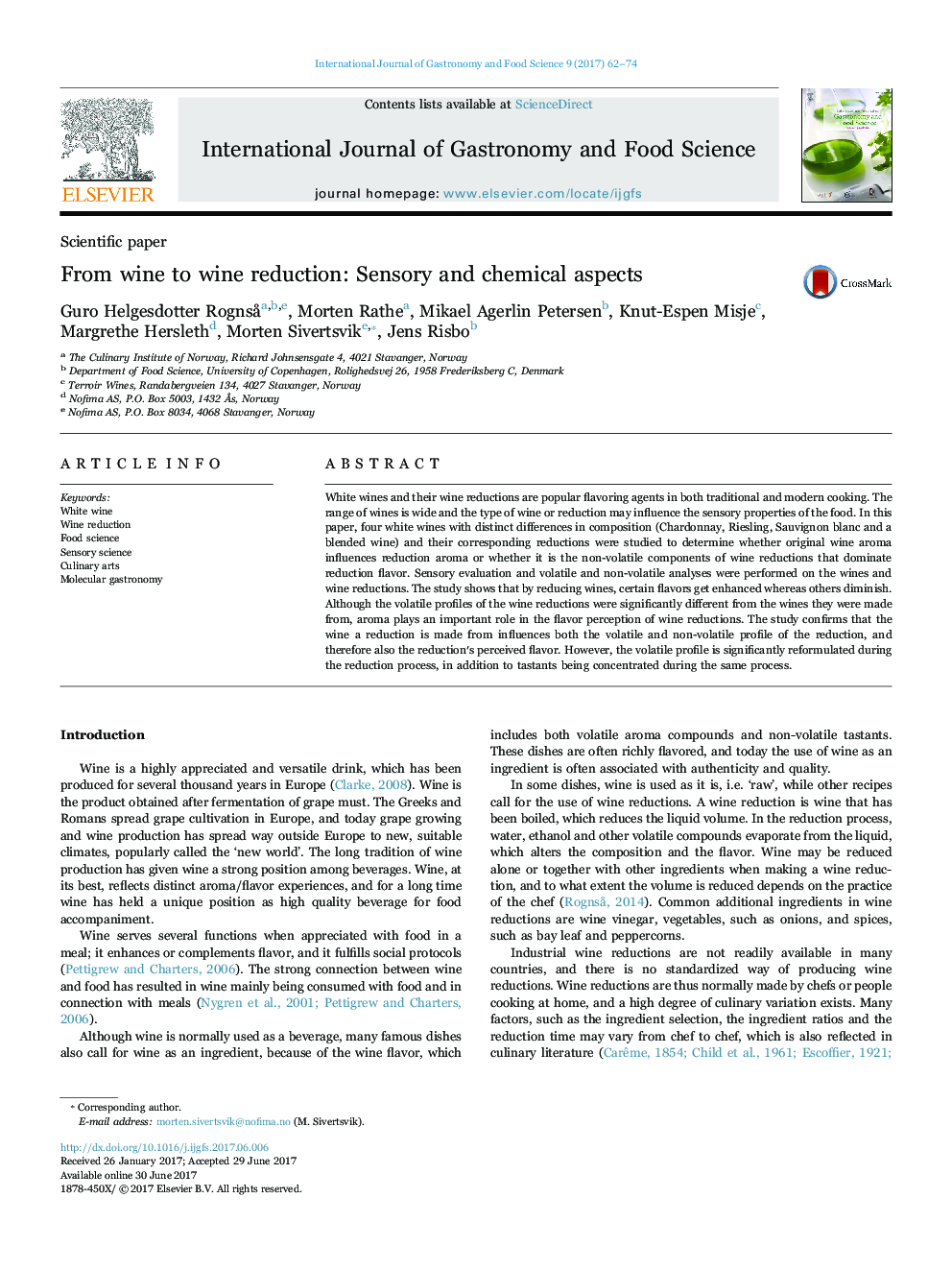| Article ID | Journal | Published Year | Pages | File Type |
|---|---|---|---|---|
| 7535028 | International Journal of Gastronomy and Food Science | 2017 | 13 Pages |
Abstract
White wines and their wine reductions are popular flavoring agents in both traditional and modern cooking. The range of wines is wide and the type of wine or reduction may influence the sensory properties of the food. In this paper, four white wines with distinct differences in composition (Chardonnay, Riesling, Sauvignon blanc and a blended wine) and their corresponding reductions were studied to determine whether original wine aroma influences reduction aroma or whether it is the non-volatile components of wine reductions that dominate reduction flavor. Sensory evaluation and volatile and non-volatile analyses were performed on the wines and wine reductions. The study shows that by reducing wines, certain flavors get enhanced whereas others diminish. Although the volatile profiles of the wine reductions were significantly different from the wines they were made from, aroma plays an important role in the flavor perception of wine reductions. The study confirms that the wine a reduction is made from influences both the volatile and non-volatile profile of the reduction, and therefore also the reduction׳s perceived flavor. However, the volatile profile is significantly reformulated during the reduction process, in addition to tastants being concentrated during the same process.
Related Topics
Life Sciences
Agricultural and Biological Sciences
Agricultural and Biological Sciences (General)
Authors
Guro Helgesdotter Rognså, Morten Rathe, Mikael Agerlin Petersen, Knut-Espen Misje, Margrethe Hersleth, Morten Sivertsvik, Jens Risbo,
